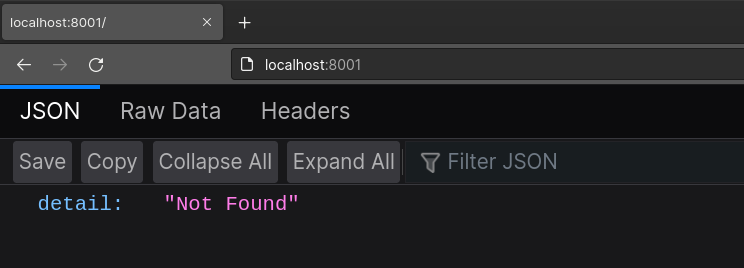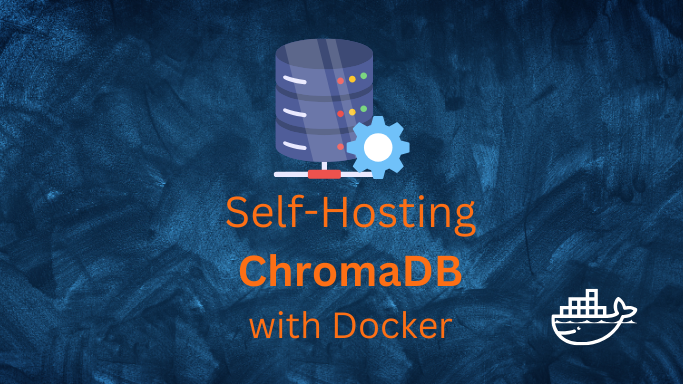Efficient data management is crucial, and ChromaDB is at the forefront of this revolution.
Welcome into the world of ChromaDB, a cutting-edge Vector Database. Whether you’re a developer, data scientist, or tech enthusiast, you’ll discover how ChromaDB is transforming data storage and retrieval with its speed, scalability, and flexibility.
🔍 What Are Vector Databases? A Simple Explanation
-
Imagine a Library: Think of a vector database as a special library for storing information. But instead of books, this library holds numbers and words that represent things like images, songs, or even ideas.
-
Special Numbers: In this library, each piece of information is represented by a special number called a “vector.” These vectors are like secret codes that describe what something looks like or means.
-
Finding Similar Things: The cool thing about vector databases is that they can quickly find things that are similar to each other. It’s like having a super-fast search engine that can find books that are similar to the one you’re looking for in the library.
-
Great for AI: Vector databases are really helpful for artificial intelligence (AI) because they make it easy for AI programs to understand and work with lots of different kinds of information, like pictures, music, or text.
-
Making Smart Decisions: With vector databases, AI can make smart decisions, like recommending a song you might like based on other songs you’ve listened to, or identifying objects in a picture.
Why VectorDBs?
You might have heard that AI models are trained with data, but did you know that we can now give context to those AI models thanks to vector databases and embedding models?
Here’s why vector databases are essential components in the world of artificial intelligence:
🎯 Why Vector Databases Are Essential for AI Projects
-
Efficient Similarity Search: Vector databases excel at performing similarity searches, enabling AI applications such as recommendation systems, image retrieval, and natural language processing to quickly find similar data points.
-
Scalability: Vector databases are designed to handle large-scale datasets efficiently, making them ideal for AI projects that deal with massive amounts of data, such as deep learning models and big data analytics.
-
High Dimensionality Support: AI projects often involve high-dimensional data, such as images, audio, and text embeddings. Vector databases are capable of storing and querying high-dimensional vectors, allowing AI models to work with complex data representations.
-
Real-time Processing: Vector databases are optimized for real-time data processing, enabling AI applications to make instant decisions and responses based on incoming data streams. This is crucial for applications like fraud detection, anomaly detection, and real-time recommendation systems.
-
Versatility: Vector databases can be applied to a wide range of AI tasks, including classification, clustering, regression, and anomaly detection. Their versatility makes them indispensable tools for AI practitioners seeking to build robust and scalable solutions.
The ChromaDB Project
The ChromaDB Project is fully open source and you can have a look to the official…
With ChromaDB, you have control on your Embeddings Data.
Let’s Deep dive into Vector DBs and get ChromaDB running locally.
SelfHosting ChromaDB
ChromaDB with Docker
First Things First - Get Docker! 🐋
Important step and quite recommended for any SelfHosting Project - Get Docker Installed
It will be one command, this one, if you are in Linux:
apt-get update && sudo apt-get upgrade && curl -fsSL https://get.docker.com -o get-docker.sh
sh get-docker.sh && docker version
ChromaDB Docker Compose
The ChromaDB Project documentation and they give us a hint to quicly spin up ChromaDB with Docker CLI:
ChromaDB with Docker CLI
docker pull chromadb/chroma
docker run -p 8001:8000 chromadb/chroma
But for proper SelfHosting and Docker Container Management, lets SelfHost ChromaDB with docker-compose:
#version: '3.9'
services:
chroma:
container_name: chroma-container
image: chromadb/chroma
ports:
- "8001:8000"
volumes:
- chroma_data:/chroma/chroma
volumes:
chroma_data:
driver: local
Then, just go to: http://localhost:8001 and http://localhost:8001/api/v1
This is how the interface will look like:

Just check the heartbeat and then you are good to go with ChromaDB ✅

ChromaDB ready Locally? Exciting Project Ideas 🎉
Now that ChromaDB is up and running on your local machine, the possibilities are endless! Here are some exciting AI project ideas you can explore:
-
Image Similarity Search: Leverage ChromaDB to build a visual search engine that can find similar images based on color and texture features. This can be useful for e-commerce platforms, image organization tools, and more.
-
Music Recommendation System: Use ChromaDB to store and index music embeddings, then build a recommendation system that suggests songs based on user preferences and music similarity. This project could enhance streaming platforms and personalized music discovery services.
-
Document Clustering and Classification: Utilize ChromaDB to index document embeddings and develop a system for clustering and classifying text documents based on their semantic similarities. This project could be applied to document organization, content recommendation, and information retrieval tasks.
-
Natural Language Processing (NLP) Applications: Integrate ChromaDB with NLP models to enhance text analysis and understanding. Build sentiment analysis tools, chatbots, or document summarization systems that leverage both textual and visual features stored in ChromaDB.
FAQ
Other F/OSS VectorDB’s
Qdrant
A vector search engine that is optimized for storing and searching large volumes of vector data.
This is the default VectorDB that PrivateGPT uses.
Faiss
By Facebook AI: Primarily a library for efficient similarity search, but can be used in conjunction with databases to handle vector data.
- The faiss Site
- The faiss Source Code at Github
- License: MIT ❤️
⚡ Discover more Free Vector Databases: Open-Source Powered
-
Milvus
- An open-source vector database designed for scalable similarity search and AI applications.
-
Pinecone
- A scalable vector database service, though not entirely open source, it offers a free tier that can be useful for students.
-
Elastic Search
- While primarily a search engine, it can be used as a vector database with its dense_vector datatype and KNN search capabilities.
-
LanceDB
- LanceDB is a vector database that focuses on providing high performance for both ingestion and querying of vector data.
- Key Features:
- Efficient Indexing: It uses advanced indexing techniques to handle large-scale vector data efficiently.
- Real-time Processing: Designed for real-time data processing, making it suitable for applications that require immediate insights from vector data.
- Use Cases: Ideal for scenarios where both high-speed data ingestion and querying are critical, such as real-time recommendation systems, image retrieval systems, etc.
- Key Features:
- LanceDB is a vector database that focuses on providing high performance for both ingestion and querying of vector data.
-
Weaviate
- Weaviate is an open-source smart vector search engine that allows for storage and retrieval of high-dimensional vector data.
- **Key Features:** - Semantic Search: Integrates machine learning models to enable semantic search capabilities. - GraphQL API: Offers a GraphQL interface for querying, making it accessible and easy to integrate into various applications. - Scalable Architecture: Designed to scale horizontally, facilitating the management of large datasets.- Use Cases: Particularly useful for developers building applications that require semantic understanding and context-aware searching, like advanced search engines, recommendation systems, etc.
